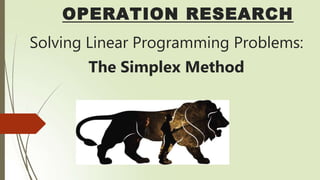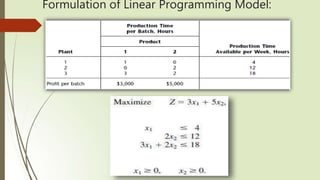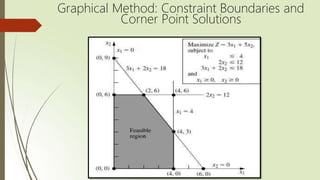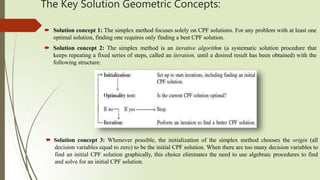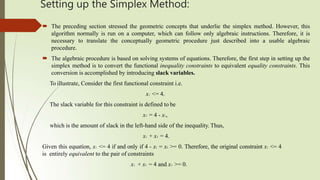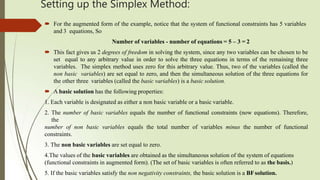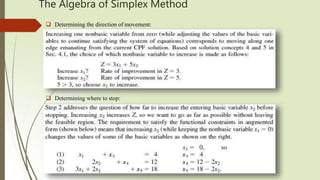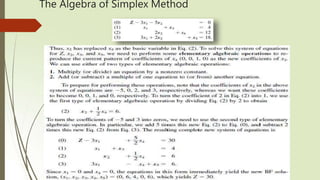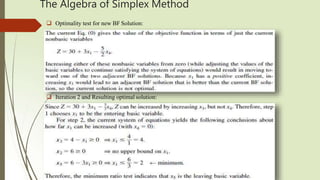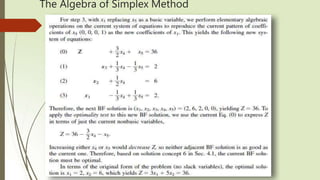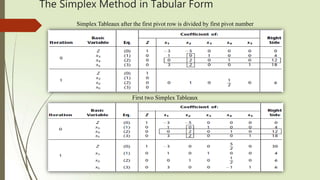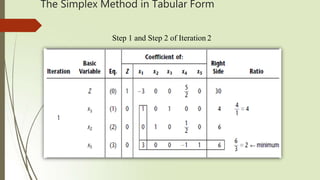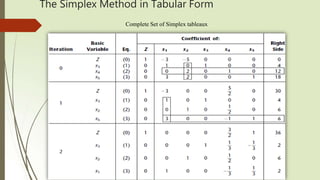The document discusses solving linear programming problems using the simplex method. It begins by describing a case study involving determining production rates for two new glass products. It then provides an overview of setting up the simplex method, which involves converting inequalities to equalities using slack variables, designating basic and non-basic variables, and using a simplex tableau to compactly represent the system of equations. The key steps of the simplex method are described, including initialization, optimality testing, determining the direction of movement, and iterating until optimality is reached.
